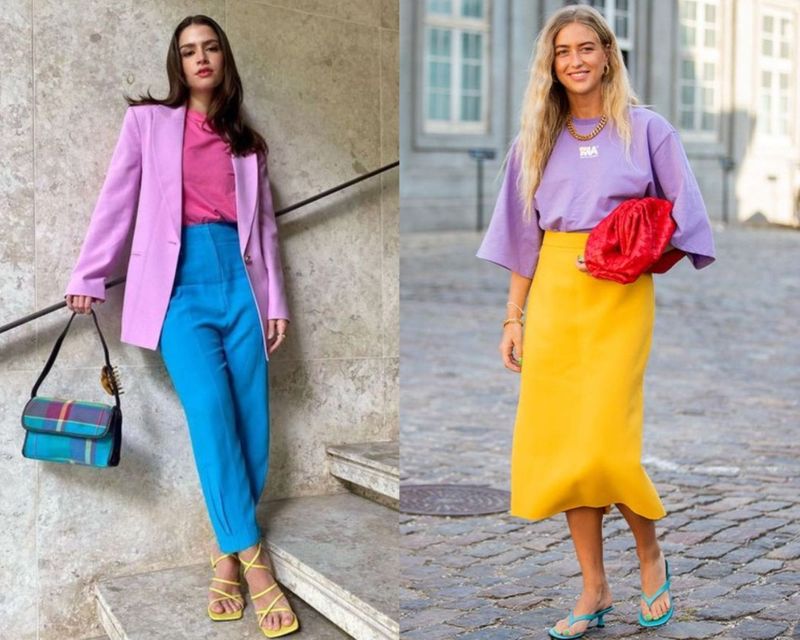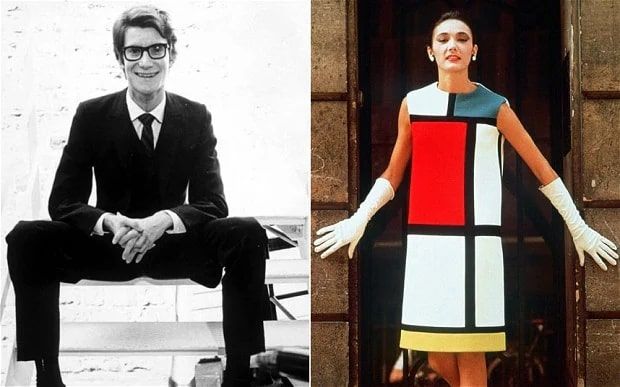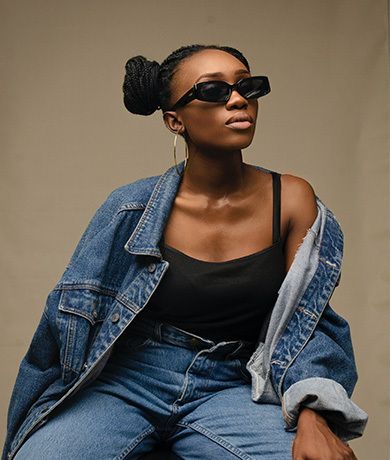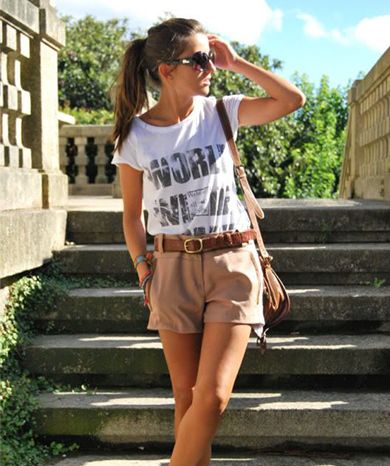Publication date January 3, 2024
Color-Blocking: What it is and How to Color-Block Like Your Favorite Fashion Icon
Stuck in boring neutrals? Color-blocking can be your escape hatch! It's more than just throwing random colors together – it's an art form with the power to transform your wardrobe and boost your confidence.
But I get it, staring at a rainbow of options can be intimidating, especially for minimalists who only work with neutrals and monochromes. But, honestly speaking nothing expresses your individuality and fashion prowess more than color.
This post is your ultimate cheat sheet. We'll dive into color blocking basics, and types of color blocking and explore, and equip you with tips to rock this trend like your favorite style influencer. So, let's get started!

Source: ediva. gr
Recommended articles
What is Color Blocking?
Color blocking, in simple terms, is the use of color as the main tool to put together a look. In this process, one or more colors can be used, hence the word “block” to define this technique. Usually, it’s easier to avoid prints as much as possible to give all the prominence to the power of the colors and the textures of the garments.
In other words, in the fashion industry, the process of color-blocking refers to wearing blocks of colors. Experts say that color blocking is different from how people generally dress because the colors in the outfit are considered louder, or colors that clash. Fashion designers explain color-blocking as wearing multiple articles of solid-colored clothing in a single outfit.
Traditionally, color blocking consists of putting two or three different colors, but complementary colors together in one outfit. If the colors are not direct opposites on the color wheel, It is still considered color-blocking. For instance, yellow and orange are right next to each other, but adding purple (a color on the opposite of the wheel) creates a color-blocking outfit.
How did the Color-blocking trend emerge?
Historically, for many decades color was a way for social classes to differentiate themselves. In most cases, only merchants, kings, and emperors were able to purchase it, as the color pigments were highly prized. But, as time passed, technology and chemistry advanced to the point of democratizing color in the 1960s and 1970s. It was from then people started playing with color.

Source: The Telegraph
Fashion designers such as Yves Saint Laurent, Courrèges, and Stephen Burrows joined the fascination for the color of artists such as Rothko, Mondrian, and Vasarely, awakening a new era of attention towards the magnetism of color and the possibilities of its combinations.
Even today in 2023, color blocking remains relevant due to its versatility and ability to inject personality and individuality into outfits. The constant evolution of street style, contemporary art, and social media trends are increasing the popularity that this vibrant trend continues to evolve.
Types of color blocking
Here are different ways to use color blocks to create a chic and daring outfit:
Monochromatic color block
A monochromatic color block is a total look built around one single color. Many people have adored this color block as combining colors is elegant and stylish. However, we must remind you to be careful with the following:
- Don’t go with a color that doesn’t match your skin’s and hair’s.
- Don’t choose those colors that can feel “too much” or a bit cloying, such as baby pink or a deep red
- Make sure you look after the details.
Contrasting color block
There are numerous ways to wear contrasting colors and complement them, however, consider the following points:
- Select two colors, one neutral and one more powerful or trendy
- Focus on a color wheel and choose a base color and its complementary (opposite to it on the wheel). If you choose two or three colors, ensure they form a triangle shape on the wheel.
- Let nature or artistic color inspire you, and when you see a color combination that you love, take a photo and save it as a base for future looks.
Additionally, another type of color block is to wear the same color but in different shades. For example, you can combine baby blue, grey, navy blue, and blue-white to give depth and contrast to your look.
Tips for wearing color blocks in your looks
It’s possible that when you’re over 50 you might feel not quite yourself or a bit like playing “dress up” when trying to pile on lots of accessories. I love accessories and I believe they’re the perfect elements to experiment with color blocks.
It’s a great way to play with your style and forget about overdone looks, difficult prints, or excessive outfits.
What to do
Here, style is all about you, and below few points to consider that will help you improve your overall look:
- Wear the color block outfits that suit you best next to your face. If that’s not possible, balance it out with jewelry or lipstick to counteract any washed-out effect
- Experiment with layers in tops, jumpers, two-tone dresses, jumpsuits, one-color overalls, etc.
- Play with the darkest color on the areas of your body you like less and the most vibrant and eye-catching color on the areas you want to highlight
- Give attention to the colors of the year: Pantone makes it easy for you with their choices, and it’s often a good idea to choose a trendy shade of yellow rather than one that is no longer relevant.
What to Avoid
Here are some Don’t points that you should definitely avoid:
- When you’re experimenting with color, don’t include garments that play excessively with volumes or textures or with elements that may overload the look
- Lose sight of the fabrics you select for your garments: be careful when washing them so that the color doesn’t wash off
- Overload with colors on accessories: neutral colors work well on any accessories if your look is doing the talking
How to Color-Block Like Your Favorite Fashion Icon
Whether you’re someone who is afraid of experimenting with new colors or simply want to find new ideas for your wardrobe, here are the 5 tips to color-block your clothes like true fashionistas.
1. Choose colors that match your skin tone
Many people believe that if your skin is not pale or light, you should not wear bright colors. I myself have a rather neutral skin tone, so for a long time, I was intimidated by wearing different colors. But I eventually figured out that you just need to find colors that suit your undertone.
Look for if your undertone is warm, cold, or neutral. If you don’t know don’t worry, you can easily Google the telltale signs of your skin tone. Then if you find that you have a cool skin tone then it’s a good idea to try navy blue, light purple, lilac purple, pink, and gray colors.
In case of warm skin tones, you can go with brown, green, olive green, yellow, orange, coral, or beige. Lastly, when it comes to neutral skin tones, you can go well with most colors, especially jade green, red, white, pink
2. Know the color wheel
Now that you’re aware of the colors that match your skin tone, it’s important to understand the color wheel. There are some fundamental rules of color matching so that you have an outfit as a true fashionista. The simplest way to use the color wheel is to mix colors. You can either use colors next to each other or opposite each other on the wheel.
Have you ever noticed someone on the street wearing colorful clothes but still looking kind of “off”? It’s because the colors they have chosen for their outfit don’t follow the rules of this wheel.
As an example, red and pink tones are next to each other, so when they are combined they work well together. Other colors such as yellow and purple, or green and orange are opposite each other, so when you choose these colors for your outfit it will look perfect. Even easier, choose different tones in the same color family to coordinate, for instance, light purple mixed with dark purple, mustard yellow, combined with lemon yellow.
What if when you want to combine colors with patterns? If you like to wear a floral top with plenty of mixed colors, team it up with pants or skirts that have the same color as one of the colors on the shirt.
3. Keep it simple
It’s also important to keep in mind that when you have decided to wear color-block outfits, you should minimize the details and accessories on your outfit to make them look more elegant. It’s always best to choose classic items, such as high-waisted pants, blazers, A-line skirts, and pencil skirts. With such simple things, even with extremely striking colors, the overall outfit is still trendy in any context.
4. Mix with neutral colors
I have to say, this one is my favorite way of dressing up in the summer. If you don’t want to look more bright or colorful, you can combine big, bold colors with more neutral items. A floral shirt can perfectly go with a black blazer, a pastel blazer can go with jeans or a beige pencil skirt. That’s why we often find items like basic t-shirts, white/black/beige blazers, and black/beige pants in our wardrobe to mix with louder pieces.
5. Shine through accessories
As we discussed earlier how accessories can enhance overall your color-block fashion. And if you’re still feeling not sure about going with bold colors in your outfit, accessories are where you can experiment with colors.
For me, accessories look perfect with eye-catching colors, such as pink, metallic, and blue to make the most basic outfits more interesting. Additionally, multicolored earrings and necklaces are also making a comeback and are a simple way to elevate your outfit to a new, more radiant look.
Hopefully, now you know the trick to create color-blocking outfits just like your favorite fashion icon, do share with me your favorite colorful outfits, in the comments below!
Frequently Asked Questions
Q. What is color-blocking?
In the fashion industry, the process of color-blocking refers to wearing blocks of colors. Color blocking is the use of color as the main tool to put together a look. In this process, one or more colors can be used, hence the word “block” to define this technique.
Q. What is the color block theory?
Color-block theory refers to the technique of using large blocks of contrasting colors in your outfit. This theory further states that there are unwritten rules in color-blocking such as not wearing too many colors together at once and balancing an outfit with a neutral such as grey.
Q. What are the 3 basic color theories?
It’s hard to determine the 3 basic color theories, as there are no universally agreed top 3 basic color theories, however, there are 3 fundamental theories that stand out for their widespread use and importance: Color Wheel and Primary Colors, Color Psychology, and Color Harmony and Composition.
Q. What is color blocking in fashion?
In the fashion industry, color-blocking refers to wearing blocks of colors. Color blocking can also be defined as mixing items in blocks of solid colors that create a strong contrast, or wearing single items that are color-blocked with panels of different colors.




